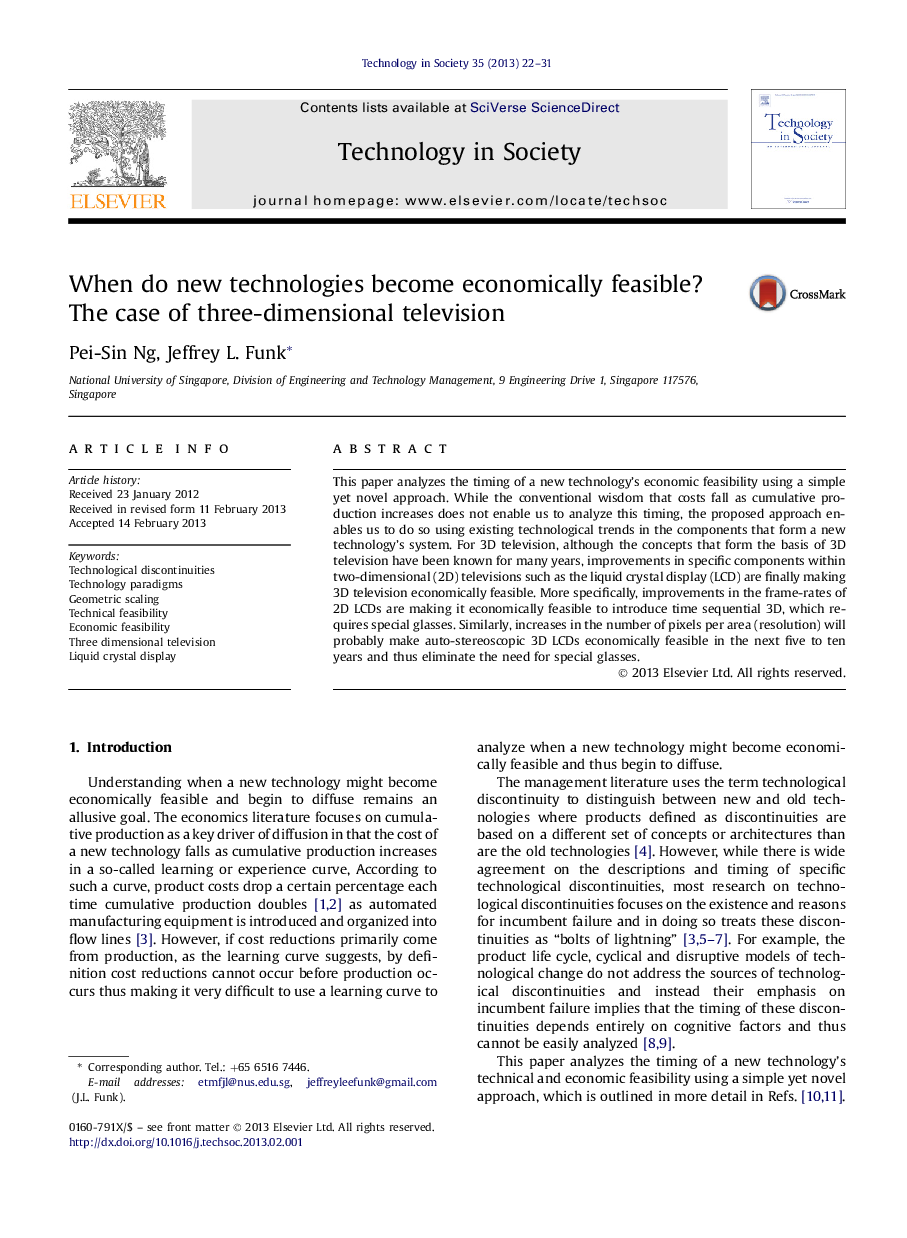| Article ID | Journal | Published Year | Pages | File Type |
|---|---|---|---|---|
| 375266 | Technology in Society | 2013 | 10 Pages |
This paper analyzes the timing of a new technology's economic feasibility using a simple yet novel approach. While the conventional wisdom that costs fall as cumulative production increases does not enable us to analyze this timing, the proposed approach enables us to do so using existing technological trends in the components that form a new technology's system. For 3D television, although the concepts that form the basis of 3D television have been known for many years, improvements in specific components within two-dimensional (2D) televisions such as the liquid crystal display (LCD) are finally making 3D television economically feasible. More specifically, improvements in the frame-rates of 2D LCDs are making it economically feasible to introduce time sequential 3D, which requires special glasses. Similarly, increases in the number of pixels per area (resolution) will probably make auto-stereoscopic 3D LCDs economically feasible in the next five to ten years and thus eliminate the need for special glasses.
► When new technologies becoming economically feasible is an important issue. ► Economic feasibility depends on when the components reach specific levels of performance and cost. ► Analyze the timing of economic feasibility by considering the cost and performance of components. ► Timing of 3D television depends on frame rates and pixel counts of LCDs.
